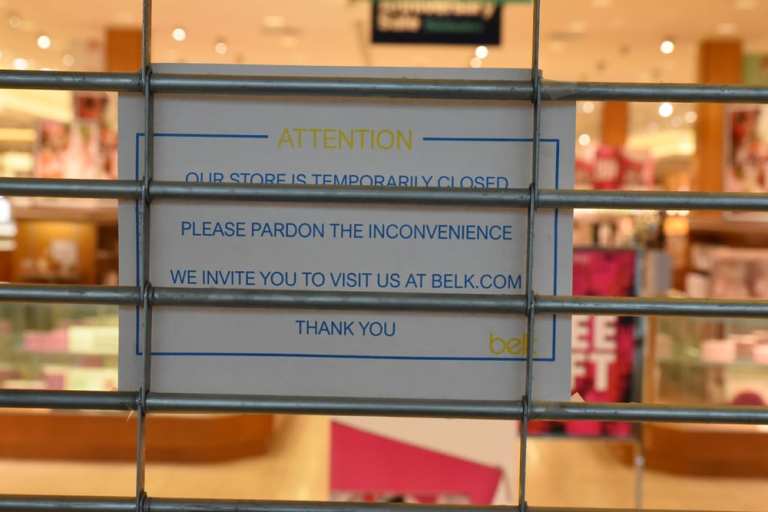
The supply chain has withstood its crisis stress test, as seen in the maintenance of inventory by Overstock.com, most supermarket products and the resumption of Chinese manufacturing. But it looks like retail’s supply cousin – demand – is the next domino to fall.
The evidence comes most clearly from two places. One: eCommerce sites shutting down. Two: factory orders being canceled. According to Glossy, several fashion companies have halted operations entirely and can’t fulfill eCommerce orders due to shutdowns at distribution centers. Among those shutting down: Reformation, New York-based Marysia and also NYC-based Frankie Shop. Victoria’s Secret and Pink have also shut down eCommerce operations for the duration of the crisis. H&M has had to “temporarily pause new orders as well as evaluate potential changes on recently placed orders” due to the global drop in demand, a spokesperson said in an emailed statement.
The moves come despite the fact that online sales have increased 52 percent compared to the same timeframe a year ago, and the number of online shoppers has increased 8.8 percent since the coronavirus began, according to SaaS platform provider Quantum Metric.
Overseas factory orders have taken a serious hit. In Bangladesh, factories have already seen $138 million in orders canceled or postponed, Reuters reported. In a typical month last year, the country’s garment exports ranged from about $2.7 billion to $3.1 billion, according to the Bangladesh Garment Manufacturers and Exporters Association (BGMEA). Rubana Huq, president of the BGMEA, told Vogue Business that 20 factories collectively had $10 million in orders canceled in one day this week.
In the U.S., auto factories are mostly closed due to health concerns. However, soft spots are showing in other industries. For example, Montreal-based Gildan Activewear has suspended operations in its three North Carolina factories.
“This will allow us to respect government recommendations and align production and inventory levels with current demand requirements. All other areas of our business – including our distribution centers, which service the various regions where we sell our products – will remain open for the time being with good inventory availability levels to service our customers, operating with appropriate measures in place to protect our employees, including remote working arrangements for many of our office staff,” the company said. “Additionally, although we have not yet seen a significant deceleration of demand for our products in all the retail channels that we serve, we expect the multitude of recently announced temporary store closures and social distancing measures being recommended by governments and health protection agencies will also continue to slow retail demand.”
Other more below-the-radar industries are on the ropes. For example, the American flower industry says many of its members are less than a week away from ruin.
While a handful of retailers nationwide continue to carry flowers, many grocery brands and distributors are canceling orders or turning deliveries away. Farmers also express difficulty with getting their blooms and greens transported due to confusion around agricultural products and their exemption from the restrictions.
“America’s flower farmers, the floral industry and all of their employees are teetering on economic devastation,” said Dave Pruitt, CEO of The California Cut Flower Commission and administrator of Certified American Grown Flowers. “These people literally cannot hold on without support from consumers. We urge our fellow Americans to please consider purchasing fresh American-grown flowers and greens the next time you’re in the store, and ask for our flowers to be added back into the distribution pipeline as a valued agricultural commodity.”
The short-term outlook, federal stimulus package notwithstanding, is dire. S&P Ratings put a recession warning out late last week. “The sectoral hits should be similar, with the key addition of the oil and gas sector, given the plunge in global prices,” it said. “Owing to the strong start to the year and the lag in many key metrics, it looks like the U.S. will post marginally negative growth in the first quarter, with the big hit coming in the second quarter (a seasonally adjusted, annualized contraction of about 6 percent) before recovery begins in the second half of the year.”